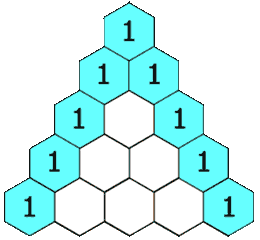[1] "EWR" "LGA" "JFK"W#04: Math refresh, Function Programming, Descriptive Statistics
Math: Sets and vectors
Definition: Sets and vectors
A set is mathematical model for the collection of different things.
Examples
- \(\{3, \text{Hi}, 😀, 🖖 \}\)
- \(\{1,3,5\}\)
- The natural numbers \(\mathbb{N} = \{1, 2, 3, \dots\}\) (infinite!)
- \(\{\mathtt{"EWR"}, \mathtt{"LGA"}, \mathtt{"JFK"}\}\)
these areoriginairports inflights
Math: Sets and vectors
A vector is an ordered collection of things (elements) of the same type.
In a set each thing can only be once and the order does not matter!
\(\{1,3,5\} = \{3,5,1\} = \{1,1,1,3,5,5\}\)
For vectors:
\([1\ 3\ 5] \neq [3\ 5\ 1]\) because we compare component-wise, so we cannot even compare with those with the vector \([1\ 1\ 1\ 3\ 5\ 5]\)
Math: Set operations
Sets \(A = \{🐺, 🦊, 🐶\}\) and \(B = \{🐶, 🐷, 🐹\}\), \(C = \{🐶, 🐷\}\):
- Set union \(A \cup B\) = {🐺, 🦊, 🐶, 🐷, 🐹}
\(x \in A \cup B\) when \(x \in A\)|(or) \(x\in B\) - Set intersection \(A \cap B\) = {🐶}
\(x \in A \cap B\) when \(x \in A\)&(and) \(x\in B\) - Set difference \(A \setminus B = \{🐺, 🦊\}\), \(B \setminus A\) = {🐷, 🐹}
- Subset: \(C \subset B\) but \(C \not\subset A\)
See the analogy of set operations and logical operations.
Set operations in R
unique shows the set of elements in a vector
Sets: Take-away
- Set operations are not a daily business in data science
- However, they are useful for data exploration!
- Knowing set operations is key to understand probability:
- A sample space is the set of all atomic events.
- An event is a subset of the sample
- A probability function assigns probabilities to all events.
Math: Functions
Functions mathematically
Consider two sets: The domain \(X\) and the codomain \(Y\).
A function \(f\) assigns each element of \(X\) to exactly one element of \(Y\).
We write \(f : X \to Y\)
“\(f\) maps from \(X\) to \(Y\)”
and \(x \mapsto f(x)\)
“\(x\) maps to \(f(x)\)”
The yellow set is called the image of \(f\).

Conventions in mathematical text
- Sets are denoted with capital letters.
- Their elements with (corresponding) small letters.
- Functions are often called \(f\), \(g\), or \(h\).
- Other terminology can be used!
Important in math
- When you read math:
Keep track of what objects are! What are functions, what are sets, what are numbers, …1 - When you write math: Define what objects are.
Is this a mathematical function?
 \(\ \mapsto\ \)
\(\ \mapsto\ \) 
Input from \(X = \{\text{A picture where a face can be recognized}\}\).
Function: Upload input at https://funny.pho.to/lion/ and download output.
Output from \(Y = \{\text{Set of pictures with a specific format.}\}\)
Yes, it is a function. Important: Output is the same for the same input!
Is this a mathematical function?
Input a text snippet. Function: Enter text at https://www.craiyon.com. Output a picture.

Other examples:
- “Nuclear explosion broccoli”
- “The Eye of Sauron reading a newspaper”
- “The legendary attack of Hamster Godzilla wearing a tiny Sombrero”



No, it is not a function. It has nine outcomes and these change when run again.
Graphs of functions
- A function is characterized by the set all possible pairs \((x,f(x))\).
- This is called its graph.
- When domain and codomain are real numbers then the graph can be shown in a Cartesian coordinate system. Example \(f(x) = x^3 - x^2\)

Some functions \(f: \mathbb{R} \to \mathbb{R}\)
\(f(x) = x\) identity function
\(f(x) = x^2\) square function
\(f(x) = \sqrt{x}\) square root function
\(f(x) = e^x\) exponential function
\(f(x) = \log(x)\) natural logarithm
- Square and square root function are inverse of each other. Exponential and natural logarithm, too.
\(\sqrt[2]{x}^2 = \sqrt[2]{x^2} = x\), \(\log(e^x) = e^{\log(x)} = x\)
- Identity function graph as mirror axis.

Shifts and scales
How can we shift, stretch, or shrink a graph vertically and horizontally?
Add a constant to the function.
\(f(x) = x^3 - x^2 \leadsto\)
\(\quad f(x) = x^3 - x^2 + a\)
For \(a =\) -2, -0.5, 0.5, 2

Subtract a constant from all \(x\) within the function definition.
\(f(x) = x^3 - x^2 \leadsto\)
\(\quad f(x) = (x - a)^3 - (x - a)^2\)
For \(a =\) -2, -0.5, 0.5, 2
Attention:
Shifting \(a\) units to the right needs subtracting \(a\)!
You can think of the coordinate system being shifted in direction \(a\) while the graph stays.

Multiply a constant to all \(x\) within the function definition.
\(f(x) = x^3 - x^2 \leadsto\)
\(\quad f(x) = a(x^3 - x^2)\)
For \(a =\) -2, -0.5, 0.5, 2
Negative numbers flip the graph around the \(x\)-axis.

Divide all \(x\) within the function definition by a constant.
\(f(x) = x^3 - x^2 \leadsto\)
\(\quad f(x) = (x/a)^3 - (x/a)^2\)
For \(a =\) -2, -0.5, 0.5, 2
Negative numbers flip the graph around the \(y\)-axis.
Attention: Stretching needs a division by \(a\)!
You can think of the coordinate system being stretched multiplicatively by \(a\) while the graph stays.

Math: Polynomials and exponentials
A polynomial is a function which is composed of (many) addends of the form \(ax^n\) for different values of \(a\) and \(n\).
In an exponential the \(x\) appears in the exponent.
\(f(x) = x^3\) vs. \(f(x) = e^x\)

For \(x\to\infty\), any exponential will finally “overtake” any polynomial.
Math: Exponentiations and logarithms
Rules for exponentiation
\(x^0\)
\(0^x\)
\(0^0\)
\((x\cdot y)^a\)
\(x^{-a}\), \(x^{-1}\)
\(x^\frac{a}{b}\), \(x^\frac{1}{2}\)
\((x^a)^b\)
\(x^0 = 1\)
\(0^x = 0\) for \(x\neq 0\)
\(0^0 = 1\) (discontinuity in \(0^x\))
\((x\cdot y)^a = x^a\cdot x^b\)
\(x^{-a} = \frac{1}{x^a}\), \(x^{-1} = \frac{1}{x}\)
\(x^\frac{a}{b} = \sqrt[b]{x^a} = (\sqrt[b]{x})^a,\ x^\frac{1}{2} = \sqrt{x}\)
\((x^a)^b = x^{a\cdot b} = (x^b)^a \neq x^{a^b} = x^{(a^b)}\)
Example: \((4^3)^2 = 64^2 = 4096 \qquad 4^{3^2} = 4^9 = 262144\)
More rules for exponentiation
\(x^a\cdot x^b\)
\(x^a\cdot x^b = x^{a+b}\) Multiplication of powers (with same base \(x\)) becomes addition of exponents.
\((x+y)^a\)
No “simple” form! For \(a\) integer use binomial expansion. \((x+y)^2 = x^2 + 2xy + y^2\)
\((x+y)^3 = x^3 + 3x^2y + 3xy^2 + y^3\)
\((x+y)^n = \sum_{k=0}^n {n \choose k} x^{n-k}y^k\)
Pascal’s triangle

We meet it again in Probability:
A row represents a binomial distribution
Which tends to mimics the normal distribution more and more
and is related to the central limit theorem
Logarithms
Definition: A logarithm of \(a\) for some base \(b\) is the value of the exponent which brings \(b\) to \(a\): \(\log_b(a) = x\) means that \(b^x =a\)
Most common:
- \(\log_{10}\) useful for plotting data in logarithmic scales because the numbers can be interpreted easiest (number of decimals of the original values)
- \(\log_{e}\) natural logarithm (also \(\log\) or \(\ln\)) useful in calculus and statistics because of nice mathematical properties
\(\log_{10}(100) =\)
\(2\)
\(\log_{10}(1) =\)
\(0\)
\(\log_{10}(6590) =\)
\(3.818885\)
\(\log_{10}(0.02) =\)
\(-1.69897\)
Rules for logarithms
Usually only one base is used in the same context, because changing base is easy:
\(\log_c(x) = \frac{\log_b(x)}{\log_b(c)} = \frac{\log(x)}{\log(c)}\)
\(\log(x\cdot y)\)
\(= \log(x) + \log(y)\) Multiplication \(\to\) addition.
\(\log(x^y)\)
\(= y\cdot\log(x)\)
\(\log(x+y)\)
complicated!
Also changing bases for powers is easy: \(x^y = (e^{\log(x)})^y = e^{y\cdot\log(x)}\)
Functions in Programming
Input \(\to\) output
- Metaphorically, a function is a machine or a blackbox that for each input yields an output.
- The inputs of a function are also called arguments.
Difference to math terminolgy:
The output need not be the same for the same input.
Function as objects in R
function is a class of an object in R
Calling the function without brackets writes its code or some information.
function (x, na.rm = FALSE)
sqrt(var(if (is.vector(x) || is.factor(x)) x else as.double(x),
na.rm = na.rm))
<bytecode: 0x55b0c7b79b98>
<environment: namespace:stats>function (...) .Primitive("c")function (data = NULL, mapping = aes(), ..., environment = parent.frame())
{
UseMethod("ggplot")
}
<bytecode: 0x55b0c6cd1ae8>
<environment: namespace:ggplot2>Define your own functions! (in R)
The skeleton for a function definition is
function_nameshould be a short but evocative verb.- The
inputcan be empty or one or morenameorname=expressionterms as arguments. - The last evaluated expression is returned as output.
- When the body or the function is only one line
{}can be omitted. For example
add_one <- function(x) x + 1
Flexibility of inputs and outputs
- Arguments can be specified by
name=expressionor justexpression(then they are taken as the next argument) - Default values for arguments can be provided. Useful when an argument is a parameter.
Vectorized functions
Mathematical functions in programming are often “vectorized”:
- Operations on a single value are applied to each component of the vector.
- Operations on two values are applied “component-wise” (for vectors of the same length)
Recall: Vector creation functions
[1] 1 2 3 4 5 6 7 8 9 10 [1] -0.5 -0.4 -0.3 -0.2 -0.1 0.0 0.1 0.2 0.3 0.4 0.5 0.6 0.7 0.8 0.9
[16] 1.0 1.1 1.2 1.3 1.4 1.5 [1] 0.0000000 0.1111111 0.2222222 0.3333333 0.4444444 0.5555556 0.6666667
[8] 0.7777778 0.8888889 1.0000000[1] 1 2 3 1 2 3 1 2 3[1] 1 1 1 2 2 2 3 3 3Plotting and transformation
Vector creation and vectorized functions are key for plotting and transformation.

Conveniently ggploting functions
Conditional statements
ifexecutes a code block if a condition isTRUEelseexecutes a code block if the condition isFALSE
Skeleton
Example: A piece-wise defined function
Problem: piecewise is not vectorized. piecewise(c(1,2,3)) does not work.
Vectorized operations with map
mapfunctions apply a function to each element of a vector.1map(.x, .f, ...)applies the function.fto each element of the vector of.xand returns a list.map_dblreturns a double vector (other variants exist)
map and reduce
Instead of a list or a vector reduce returns a single value.
To that end it needs a function with two arguments. It applies it to the first two elements of the vector, then to the result and the third element, then the result and the fourth element, and so on.
Note: \(x) is a short way to write an anonymous function as function(x).
Example: Reading multiple files
Function programming: Take away
- Functions are the most important building blocks of programming.
- Functions can and often should be vectorized.
- Vectorized functions are the basis for plotting and transformation.
mapfunctions are powerful tools for iterative tasks!
Expect to not get the idea first but to love them later.
Descriptive Statistics
Descriptive vs. Inferential Statistics
- The process of using and analyzing summary statistics
- Solely concerned with properties of the observed data.
- Distinct from inferential statistics:
- Inference of properties of an underlying distribution given sampled observations from a larger population.
Summary Statistics are used to summarize a set of observations to communicate the largest amount of information as simple as possible.
Summary statistics
Univariate (for one variable)
- Measures of location, or central tendency
- Measures of statistical dispersion
- Measure of the shape of the distribution like skewness or kurtosis
Bivariate (for two variables)
- Measures of statistical dependence or correlation
Measures of central tendency
Measures of central tendency
Goal: For a sequence of numerical observations \(x_1,\dots,x_n\) we want to measure
- the “typical” value.
- a value summarizing the location of values on the numerical axis.
Three different ways:
- Arithmetic mean (also mean, average): Sum of the all observations divided by the number of observations \(\frac{1}{n}\sum_{i=1}^n x_i\)
- Median: Assume \(x_1 \leq x_2 \leq\dots\leq x_n\). Then the median is middlemost values in the sequence \(x_\frac{n+1}{2}\) when \(n\) odd. For \(n\) even there are two middlemost values and the median is \(\frac{x_\frac{n}{2} + x_\frac{n+1}{2}}{2}\)
- Mode: The value that appears most often in the sequence.
Philosophy of aggregation
- The mean represents total value per value.
Example: per capita income in a town is the total income per individual - The median represents the value such that half of the values are lower and higher.
In a democracy where each value is represented by one voter preferring it, the median is the value which is unbeatable by an absolute majority. Half of the people prefer higher the other half lower values. (Median voter model) - The mode represents the most common value.
In a democracy, the mode represents the winner of a plurality vote where each value runs as a candidate and the winner is the one with the most votes.
Mean, Median, Mode properties
Do they deliver one unambiguous answer for any sequence?
Mean and median, yes.
The mode has no rules for a tie.
Can they by generalized to variables with ordered or even unordered categories?
Mean: No.
Median: For ordered categories (except when even number and the two middlemost are not the same) Mode: For any categorical variable.
Is the measure always also in the data sequence?
Mean: No.
Median: Yes, for sequences of odd length.
Mode: Yes.
Generalized means1
For \(x_1, \dots, x_n > 0\) and \(p\in \mathbb{R}_{\neq 0}\) the generalized mean is
\[M_p(x_1, \dots, x_n) = (\frac{1}{n}\sum_{i=1}^n x_i^p)^\frac{1}{p}\]
For \(p = 0\) it is \(M_0(x_1, \dots, x_n) = (\prod_{i=1}^n x_i)^\frac{1}{n}\).
\(M_1\) is the arithmetic mean. \(M_0\) is called the geometric mean. \(M_{-1}\) the harmonic mean.
Note: Generalized means are often only reasonable when all values are positive \(x_i > 0\).
Box-Cox transformation function1
For \(p \in \mathbb{R}\): \(f(x) = \begin{cases}\frac{x^p - 1}{p} & \text{for $p\neq 0$} \\ \log(x) & \text{for $p= 0$}\end{cases}\)
The \(p\)-mean is
\[M_p(x) = f^{-1}(\frac{1}{n}\sum_{i=1}^n f(x_i))\]
with \(x = [x_1, \dots, x_n]\). \(f^{-1}\) is the inverse2 of \(f\).

Measures of central tendency and the Wisdom of the Crowd
Application: The Wisdom of the Crowd
- The collective opinion of a diverse group of independent individuals rather than that of a single expert.
- The classical wisdom-of-the-crowds finding is about point estimation of a continuous quantity.
- Popularized by James Surowiecki (2004).
- The opening anecdote is about Francis Galton’s1 surprise in 1907 that the crowd at a county fair accurately guessed the weight of an ox’s meat when their individual guesses were averaged.


Galton’s data1
What is the weight of the meat of this ox?
library(readxl)
galton <- read_excel("data/galton_data.xlsx")
galton |> ggplot(aes(Estimate)) + geom_histogram(binwidth = 5) + geom_vline(xintercept = 1198, color = "green") +
geom_vline(xintercept = mean(galton$Estimate), color = "red") + geom_vline(xintercept = median(galton$Estimate), color = "blue") + geom_vline(xintercept = Mode(galton$Estimate), color = "purple")
787 estimates, true value 1198, mean 1196.7, median 1208, mode 1218
Viertelfest Bremen 20081
How many lots will be sold by the end of the festival?
viertel <- read_csv("data/Viertelfest.csv")
viertel |> ggplot(aes(`Schätzung`)) + geom_histogram() + geom_vline(xintercept = 10788, color = "green") +
geom_vline(xintercept = mean(viertel$Schätzung), color = "red") + geom_vline(xintercept = median(viertel$Schätzung), color = "blue") + geom_vline(xintercept = Mode(viertel$Schätzung), color = "purple")
1226 estimates, the maximal value is 29530000!
We should filter out the highest values for the histogram…
Viertelfest Bremen 2008
How many lots will be sold by the end of the festival?
viertel <- read_csv("data/Viertelfest.csv")
viertel |> filter(Schätzung<100000) |> ggplot(aes(`Schätzung`)) + geom_histogram(binwidth = 500) + geom_vline(xintercept = 10788, color = "green") +
geom_vline(xintercept = mean(viertel$Schätzung), color = "red") + geom_vline(xintercept = median(viertel$Schätzung), color = "blue") + geom_vline(xintercept = Mode(viertel$Schätzung), color = "purple") + geom_vline(xintercept = exp(mean(log(viertel$Schätzung))), color = "orange")
1226 estimates, true value 10788, mean 53163.9, median 9843, mode 10000,
geometric mean 10510.1
\(\log_{10}\) transformation Viertelfest
viertel |> mutate(log10Est = log10(Schätzung)) |> ggplot(aes(log10Est)) + geom_histogram(binwidth = 0.05) + geom_vline(xintercept = log10(10788), color = "green") +
geom_vline(xintercept = log10(mean(viertel$Schätzung)), color = "red") + geom_vline(xintercept = log10(median(viertel$Schätzung)), color = "blue") + geom_vline(xintercept = log10(Mode(viertel$Schätzung)), color = "purple") + geom_vline(xintercept = mean(log10(viertel$Schätzung)), color = "orange")
1226 estimates, true value 10788, mean 53163.9, median 9843, mode 10000,
geometric mean 10510.1
Wisdom of the crowd insights
- In Galton’s sample the different measures do not make a big difference
- In the Viertelfest data the arithmetic mean performs very bad!
- The mean is vulnerable to extreme values.
Quoting Galton on the mean as a democratic aggregation function:
“The mean gives voting power to the cranks in proportion to their crankiness.” - The mode tends to be on focal values as round numbers (10,000). In Galton’s data this is not so pronounced beause estimators used several units which Galton had to convert.
- How to choose a measure to aggregate the wisdom?
- By the nature of the estimate problem? Is the scale mostly clear? (Are we in the hundreds, thousands, ten thousands, …)
- By the nature of the distribution?
- There is no real insurance against a systematic bias in the population.
Measures of dispersion
Measures of dispersion1
Goal: We want to measure
- How spread out values are around the central tendency.
- How stretched or squeezed is the distribution?
Variance is the mean of the squared deviation from the mean: \(\text{Var}(x) = \frac{1}{n}\sum_{i=1}^n(x_i - \mu)^2\) where \(\mu\) (mu) is the mean.
Standard deviation is the square root of the variance \(\text{SD}(x) = \sqrt{\text{Var}(x)}\).
The standard deviation is often denoted \(\sigma\) (sigma) and the variance \(\sigma^2\).
Mean absolute deviation (MAD) is the mean of the absolute deviation from the mean: \(\text{MAD}(x) = \frac{1}{n}\sum_{i=1}^n|x_i - \mu|\).
Range is the difference of the maximal and the minimal value \(\max(x) - \min(x)\).
Examples of measures of dispersion
Standardization
Variables are standardized by subtracting their mean and then dividing by their standard deviations.
A value from a standardized variable is called a standard score or z-score.
\(z_i = \frac{x_i - \mu}{\sigma}\)
where \(\mu\) is the mean and \(\sigma\) the standard deviation of the vector \(x\).
- This is a shift-scale transformation. We shift by the mean and scale by the standard deviation.
- A standard score \(z_i\) shows how mean standard deviations \(x_i\) is away from the mean of \(x\).
Achievements and next steps
- We have learned about the data science process
- You made essential steps in data visualization and data wrangling with New York City Flights in the Homework
- You can write and render reproducible reports
- We had some math refreshment
- We learned some data science data and programming concepts in R and in Python. Reconsider them in later homework!
Next steps coming (you will receive individual repositories for this):
- Homework mimicking data science projects
- Some exploratory data analysis in a sandbox
- Thinking about your own data science project (in groups of 2-3)


